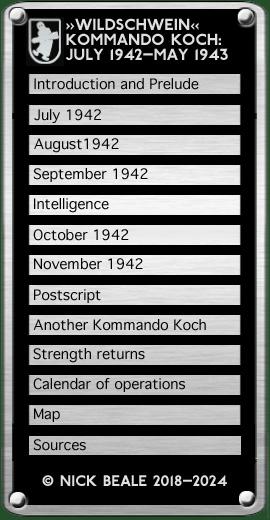|
ASV One of the prisoners had been away from Kalamaki from 3–28 August, just when Kdo. Koch was arriving, but believed that an ASV set (perhaps the only one) had been delivered to the airfield in his absence. He had been told by Ing. Herold that it was British and very difficult to maintain as the controls were far from easy to get at. The set itself was housed in an oblong grey box, mounted in a surround shaped like an inverted “U” on the rear bulkhead of the beam gunner’s compartment; to open it up for servicing entailed removing 12 screws. The display fitted to the observer’s instrument panel took the form of a 12 (w) x 20 cm (h) ground glass screen with a central vertical scale. When the set was operating, a greenish vertical trace appeared on the screen, diverging at the bottom; brightness was regulated by a control knob at the bottom right. A contact produced a blip on the trace, its offset from the centre indicating bearing while its vertical position gave the range. Maximum range was thought to be 80–90 km and as for the aerials: Ps/W were not very clear about the array employed and described it as being similar to that for Protekt [see below] with two or three twin dipoles mounted about 60 kms. [sic] above the fuselage along the centre line.
Caruso Caruso was intended to jam both AI and communications between British night fighters and their controllers (which, as we have seen, had been partially achieved over Malta and Egypt). In use by Kalamaki-based aircraft until late September, the system was now being phased out, having been removed from 6N+AJ just before its last flight. It had its drawbacks: it could not be retuned in the air; could only be run in two-minute bursts alternating with one-minute cooling-off periods; it jammed the carrying aircraft’s own radios and intercom; and the British could home on its transmissions. The transmitter used a short vertical aerial which was attached to the Heinkel’s main radio antenna with a porcelain insulator.
From RAF Middle East, the Senior Intelligence Staff Officer sent a cypher message to the Air Ministry on 29 September about 6N+AJ’s equipment. Casting doubt on the prisoners’ account, examination of the crash had revealed: … unknown transmitter (Missing) with 86 cm aerial supplied by a separate umformer U 10/S … in rear of fuselage starboard side. Transmitter unfortunately thrown overboard by crew but believed to be CARUSO, the VHF jamming apparatus in use over here and mentioned before by PS/W. According to another letter two days later, there was, “not much doubt that the ‘Caruso’ Gerät was fitted …”. An assurance followed on 7 October that, “Our officers have been warned to keep a special lookout for any ASV equipment, and of course for the ‘Caruso’-Gerät”.
continued on next page …
|
||||



